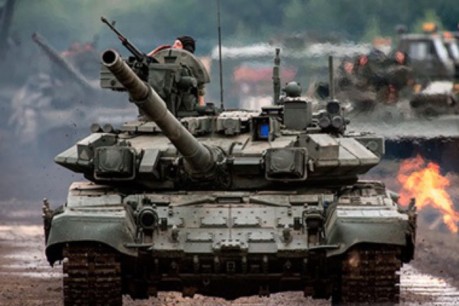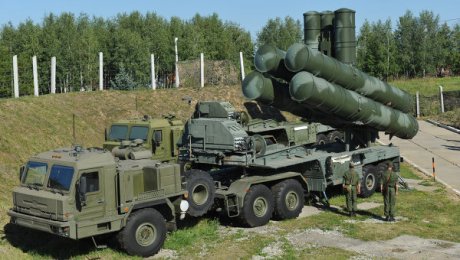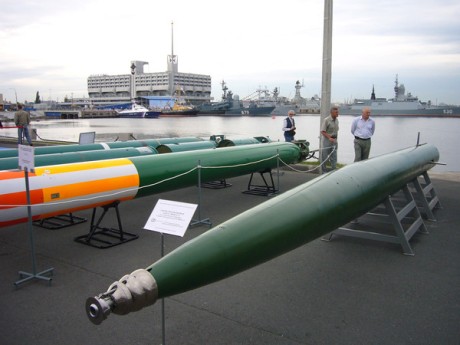Resurrecting Late-Soviet Military Technology
14 May 2015
Thursday
Recent news items have related that a couple of staples of late Soviet-era military technology may be returned to production and deployment, specifically the Mil Mi-14 (cf. Re-commissioned? Soviet nuke-capable sub-killing copter comeback slated) and the Tu-160 “Blackjack” bomber (cf. ‘Blackjack’ comeback: Russia to renew production of its most powerful strategic bomber).
In many earlier posts I have noted the surprisingly vigorous afterlife of Soviet-era military technology, as the Moskit P-270 “sunburn” anti-ship missile and the VA-111 Shkval supercavitating torpedo remain formidable weapons systems. Much of this Soviet-era weaponry can be retro-fitted with contemporary electronics, turning previously “dumb” weapons into “smart” weapons, i.e., precision guided munitions, making them even more formidable, and, as such, they can fulfill combat roles they could not previously fulfill, and in some cases they can fulfill combat roles that did not previously exist.

The T-14 Armata (industrial designation ‘Object 148’) is a Russian advanced next generation main battle tank based on the Armata Universal Combat Platform. It was first seen in public (initially with its turret and cannon shrouded) during rehearsals for the 2015 Moscow Victory Day Parade. (from Wikipedia)
Russia has, in addition, continued to produce new weapons systems that are the evolutionary descendents of Soviet-era systems, as with the latest air defense system, the S-400 Triumf, recently in the news because Russia has sold or considered selling these systems to China, India, Iran, and Syria, and the newest Russian tank, the T-14 Armata, which was in the news because one stalled in the rehearsal for the May Day parade in Moscow. The resurrection of Soviet-era weapons systems is distinct from these weapons systems in continual production and regularly updated with improvements in technology.

The S-400 Triumf (Russian: C-400 «Триумф»; NATO reporting name: SA-21 Growler), previously known as S-300PMU-3, is a new generation anti-aircraft weapon system developed by Russia’s Almaz Central Design Bureau as an upgrade of the S-300 family. (from Wikipedia)
There is an obvious narrative to account for the return to service of Soviet-era military technology, and that obvious narrative is that Vladimir Putin wants to return Russia to the international stature it enjoyed while the Soviet Union was perceived as a superpower equal to the US. For reasons of national prestige and Russian national pride, Russia is dusting off old weapons systems and at times even returning to former methods of military patrols dating to the Cold War. The most obvious examples of this have been Russian long-range bomber patrols using Tupolev Tu-95 “Bear” bombers, which, with their turboprop engines, are virtually flying antiques. I discussed a particularly striking example of Russian air patrols in Sweden and Finland in NATO?
There is also an obvious economic rationale for the resurrection of Soviet-era weapons systems, which is that the design and testing of major weapons systems has become so expensive that many of these weapons systems have entered a “death spiral,” such that even if a nation-state could afford the R&D costs, the finished product would be too expensive to produce in sufficient numbers to be combat effective. Updating known weapons platforms can be a much more cost effective way to approach this problem than starting from scratch. Enormous savings can be realized on the testing, training, and deployment phases of a weapons system.

The VA-111 Shkval (fRussian: шквал) torpedo and its descendants are supercavitating torpedoes developed by the Soviet Union. They are capable of speeds in excess of 200 knots (370 km/h). (from Wikipedia)
There is, however, much more going on here than any attempt on the part of Putin to compensate for perceived personal or national failures. The world has changed in its political structure since the post-WWII settlement that shaped the second half of the twentieth century and the immediate aftermath of the Cold War. The political (and technological) changes have changed how wars are fought. I have mentioned in many posts that the paradigm of peer-to-peer conventional engagements between mass conscript armies has effectively fallen out of contemporary history. The Cold War was based on this paradigm, with NATO and the Warsaw Pact roughly equally matched, although sufficiently different in detail that no one could predict with confidence the outcome of a conventional war in Europe, and whether or how a conventional war in Europe would escalate into a nuclear war (and, again, whether a nuclear war in Europe would escalate into globally mutually assured destruction).
In a post some time ago I discussed what I called the devolution of warfare (followed by Constraint and Devolution and Addendum on Constraint and Devolution). In that post I wrote:
“…war under the nuclear umbrella involved a devolution of war from total and absolute war, including the use of nuclear weapons, to conventional war, using all means short of nuclear weapons, and exercising restraint with these means in order to avoid triggering a nuclear strike. Next, war under the ‘no fly’ umbrella of imposed air superiority involved a devolution of war from everything that has happened since Douhet’s The Command of the Air was published, to a state of combat prior to Douhet’s deadly vision. War under the ‘no fly’ umbrella means war limited to ground combat, almost as though the age of air power had never been known.”
Having just finished listening to the book Level Zero Heroes: The Story of U.S. Marine Special Operations in Bala Murghab, Afghanistan I realized that expectations of warfighting in the twenty-first century have driven the development of rules of engagement (ROE) to the point of negating the overwhelming air superiority of the most technologically advanced nation-states. When each individual decision to drop a bomb in combat is run through a political infrastructure that includes individuals with mixed motives, combat is driven down to a level at which the only actions that can be approved are those taken by individual soldiers with the weapons they carry. This has the effect of giving plausible deniability to a nation-state, as individual soldiers are considered expendable and can be prosecuted if they make decisions in combat that fail to conform with the ideological justifications given for a military engagement.
Strategic weapons systems have always been primarily political. The devolution of warfare has meant that the most sophisticated weapons systems are being politicized from the top down, which has the practical consequence that even a superpower like the US engages primarily only in close-quarters small arms skirmishes. The big ticket, expensive, and technologically sophisticated weapons systems are frequently used only for a “show of force” (SOF) in order to intimidate, using the sound of a jet’s engines to obtain a temporary advantage in a combat environment in which a political decision has been made not to make full use of the air assets available.
There are several possible explanations for the devolution of warfare, and I have discussed some of them previously. One obvious explanation is that war has become too destructive, but human beings love war so much they must find a way of limiting the destructiveness of war if they are going to continue enjoying it, so the devolution of war serves the purposes of limiting war to a survivable level. I have made this argument several times, so I think that it has some merit, but that it is not the whole story. (I recently made a variation of this argument in Existential Threat Narratives.)
There is another approach to this problem that has just occurred to me today as I was formulating the above thoughts, and this is that the history of warfare has exhibited a pattern of settling into a culturally determined routine (such as I described in Civilization and War as Social Technologies in regard to the ritualized violence of the Aztec “Flower Battle”, Samurai swordsmanship, and the Mandan Sundance) which is then interrupted when a geographically isolated region comes into contact with a peer or near-peer civilization, with which it has no established customs of limiting violence to a survivable level. The example that comes to mind is the nearly continual warfare in the Italian peninsula among mercenary armies fighting for individual city-states in the late medieval period, which was, however, not very destructive. At this time, Italy was mostly cut off from Europe by the Alps, but this changed when the French marched into Italy under Charles VIII with 25,000 men in 1494-1498, which brought a new and much less forgiving form of war to the Italian peninsula.
Human civilization is now effectively global, and that means that no nation-state is truly isolated from any other nation-state. We are not only aware of the activities of our neighbors, we are often (painfully) aware of events occurring in distant parts of the world, which are not so distant any more. No one today could say of any quarter of the world what Neville Chamberlain said of Czechslovakia, “How horrible, fantastic, incredible it is that we should be digging trenches and trying on gas-masks here because of a quarrel in a far away country between people of whom we know nothing.”
Warfare has become a commons, and if we want to preserve this commons, we must manage it. Hence the world entire may evolve toward global ritualized, symbolic violence of the sort previously only seen in geographically isolated regions. There are no more geographically isolated regions, and with the planet as a single region warfare may tend to evolve in the direction in which it previously evolved in widely separated societies when all enemies were known and conflict was primarily a matter of prestige requirements. Globalization may now be expressed through the unification of warfare under a common set of customs intended to limit and control violence.
There is a sense in which this is a profoundly sad realization, for what it says about human nature, but there is another sense in which this is a hopeful realization, as it points to a human nature that implicitly recognizes an existential threat and modifies its behavior accordingly. If all violence could be transformed into something ritualized, symbolic, and sustainable, we would have a chance to devote our economy and industry toward the long term survivability of our species and our planet with some confidence that destructiveness will be limited from here on out.
. . . . .
. . . . .
. . . . .
. . . . .












